What can I find in this article?
- Grandidierite Colors
- Grandidierite Species
- Grandidierite Clarity and Cut
- Spiritual Meaning of Grandidierite
- Grandidierite and the Chakras
- Health Benefits of Grandidierite
- Grandidierite Price
- Grandidierite Discovery
- Where is Grandidierite found?
- How is Grandidierite formed?
- Can Grandidierite be treated?
- Did you know? Interesting facts about Grandidierite
- How to care for Grandidierite
- How to tell a real Grandidierite
- Can Grandidierite change color?
- What is so special about Grandidierite?
- Grandidierite - Gemological Properties
Grandidierite Gemstone Information
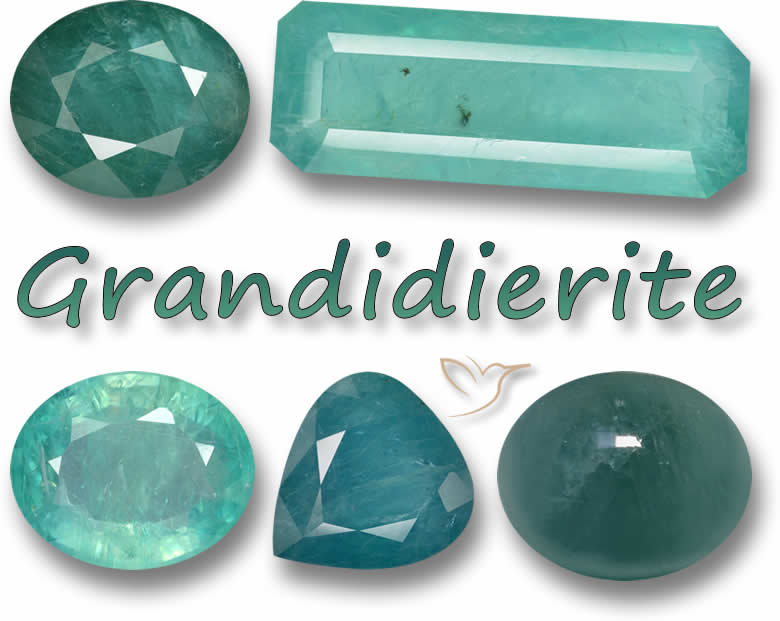
Introduction
When websites and bloggers discuss the rarest gemstones in the world, Grandidierite usually pops up in their top ten lists. It is commonly a stunning turquoise in color and only really ranges from sky blue to pale green. They are extremely scarce in any form but transparent specimens even with visible inclusions or flaws are almost impossible to find and reach incredible prices.
Grandidierite were first discovered on the fascinating island of Madagascar off the coast of southern Africa.
Isolated for 90 million years, this tropical paradise is home to unique flora and fauna as well as some of the finest gemstone mining sites in the world.
Interestingly the native population of Madagascar only arrived in the last few thousand years and they arrived from South East Asia, not nearby Africa. Perhaps that is why Madagascan gem sellers feel so comfortable here in Thailand and we are able to access their gorgeous sapphires, rubies, garnets, aquamarine and, yes, some fantastically rare and beautiful Grandidierite gemstones.
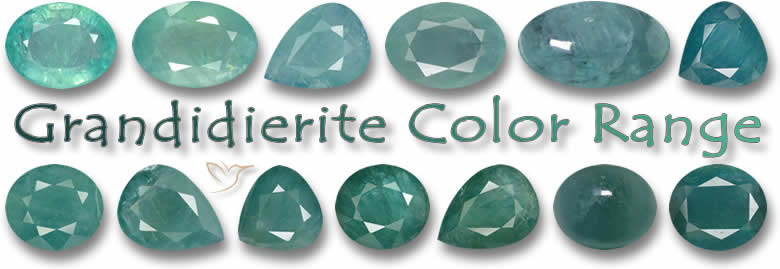
Gemstone quality Grandidierite only come in shades of blue and green with the soft neon blue color the most sought after, although this is quite relative as any color Grandidierite is very valuable. The color itself is caused by minute traces of iron impurities and the more iron that appears the bluer the gemstone.
Because of its crystal make-up Grandidierite can appear to be two or even three different colors depending on which angle it is viewed. As you turn it in your hand it can flash from yellow to green to blue and even colorless in some examples. This unusual phenomenon is called pleochroism and only occurs in a small number of gemstones.
Grandidierite is a silicate mineral made up mostly of magnesium, aluminum and boron that is colored by traces of iron. The natural mineral is not particularly rare but translucent specimens good enough for gemstones can be found (still very rare) while transparent examples ready to be faceted are extremely rare and valuable.

Discovering Grandidierite in the ground is difficult enough but when it is mined most of the rough is opaque and the small quantities deemed worthy of becoming gemstones are usually translucent. These are still a rare and beautiful gemstone when cut and polished into cabochons.
Even rarer are specimens that are at least eye-clean transparent gemstones. In 2014 miners in southern Madagascar struck a vein of Grandidierite which yielded 800kgs of rough material. From this they were able to glean 60g of transparent gemstones!
Once you have a transparent piece of Grandidierite rough this is only the beginning of the challenge as cutting and faceting this gemstone is difficult. The cutter will aim to maximize the effect of pleochroism which flashes two or three colors when turned to different angles while retaining as much weight as possible. In addition, the gemstone has a tendency to crack in two directions (known as cleavage) if not carved with great care. This is yet another reason anything larger than a carat of Grandidierite becomes enormously expensive.
The fact that it is a relatively newly discovered gemstone and it is extremely rare means there is very little known about its spiritual strengths so be a little wary of too many claims about its powers - especially any 'traditional' energies.
The presence of iron will have some influence of course and some say this gemstone gives its owner inner strength, confidence and aids clear thinking which ties in with the spiritual power of iron. Further it can assist in logical thought processes and organization in life and work.
Grandidierite has a more obvious link to the Chakras through its distinctive color as we shall see in the next few paragraphs.
Chakras are the energy centers in your body also referred to as Qi or Prana. There are seven Chakras throughout the body each influencing a particular physical, emotional or mental state.
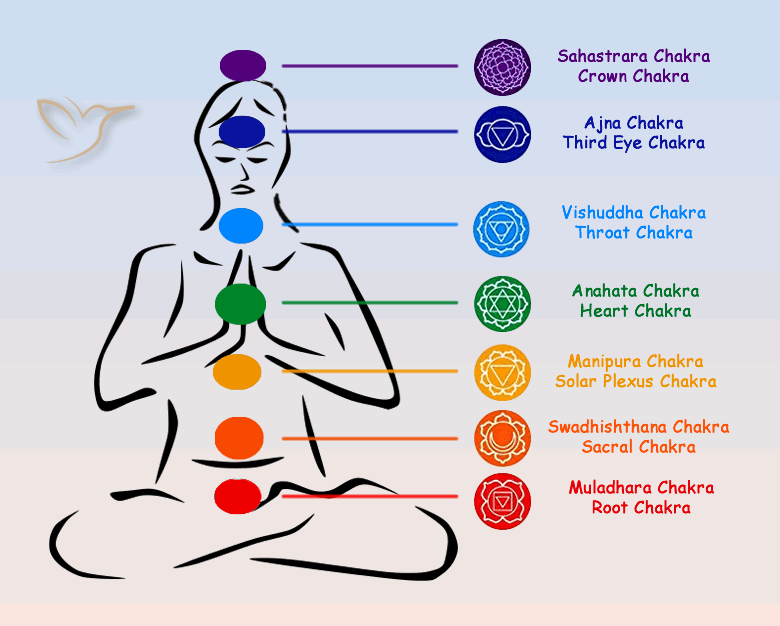
The seven chakras are as follows, Crown, Third Eye, Throat, Heart, Solar Plexus, Sacral and Root. The word Chakra is a Sanskrit word meaning wheel. Each chakra is assigned a color of influence and a gemstone which has a particularly dominant color will be connected with that color's chakra point.
Sometimes in life our Chakras become unbalanced or blocked and need to be realigned or cleansed. One way to do this is through the use of Chakra healing stones. These stones or crystals are colored to correspond to individual chakras, red for the Root Chakra, orange for the Sacral, yellow for the Solar Plexus, green for the Heart, blue for the Throat, Indigo for the Third Eye and purple for the Crown Chakra.
With its definite green to blue colors we can see that Grandidierite will have a direct influence on two Chakras, the Heart and the Throat. If the gemstone is more green than blue it will connect to the Heart Chakra and help how you relate to people and govern the love, compassion and empathy in your life. The blue gemstones will have more effect on the Throat Chakra which will help with matters of communication and expression. A turquoise Grandidierite gemstone will help with both Chakras!
We are often asked how to use gemstones for spiritual or health benefits and while we are certainly not experts in this field we have gained some experience and knowledge. Of course wearing the gemstone as a piece of jewelry is the easiest way for the crystal to influence your body.
Certain colors have connection to different parts of the body, for example green Grandidierite is associated with the heart chakra so a pendant could be ideal while blue Grandidierite is connected to the throat chakra so a set of earrings or a centerpiece on a necklace would be just right.
Alternatively they can be placed in your purse or pocket and used as a touchstone throughout the day. Hold crystals or place them in your lap while meditating. Easiest of all, just lay down with crystals on your body, lined up with the chakra points if possible. Put them in the bath (check the particular stone is impervious to water). Decorate your home with crystals and certain crystals boost the working environment so keep them on your desk, others help you relax so keep them in the lounge or living room.
Again Grandidierite gemstones do not have any traditional physical healing powers but the links to the Throat and Heart Chakra point to the part of the body that it will aid the most - heart, blood flow and the respiratory system as well as sore throats, swollen lymph nodes, tonsillitis and viral infections.
To cleanse a Grandidierite gemstone, hold it under running water, a spring or stream is ideal but a tap will suffice, while picturing the inhibitions flushing away. Then allow the Grandidierite to dry in the sun for a half an hour or so.

There is no doubt that Grandidierite is a very expensive gemstone with eye-clean transparent examples easily reaching $20,000 per carat with anything bigger than two or three carats demanding even more. The vast majority of Grandidierite gemstones sold are described as translucent or transparent but with many inclusions or flaws. However these gemstones are genuinely quite beautiful with the faceted cuts displaying the change of color from green to blue to clear and revealing charming clouds and swirls within.
Grandidierite Price List |
||
|
Color |
Weight range |
Price range / USD |
|---|---|---|
|
Faceted |
under 1ct |
$30 - 300/ct
|
|
Faceted |
1ct - 10ct |
$40 - 1200/ct
|
|
Faceted |
10ct + |
$40 - 2000/ct
|
|
Cabochon |
under 1ct |
$20 - 250/ct
|
|
Cabochon |
1ct - 10ct |
$25 - 300/ct
|
|
Cabochon |
10ct + |
$30 - 500/ct
|
Grandidierite gemstones that are less translucent or even opaque are cut into dome shapes or cabochons and while still exceedingly rare and wonderful to look at they are considerably more affordable than faceted gemstones.
Grandidierite is one of those gemstones that are so rare that rumors of new discoveries or mines being exhausted are constantly being spread. Take care if someone offers you Grandidierite gemstones at an inflated price because 'this is the last chance to buy' and equally be careful of anything way too cheap.
As with many of the –ite gemstones, Grandidierite was named in honor of someone. In this case it was Alfred Grandidier, the French explorer and scientist, who wrote 38 volumes on the flora, fauna and geology of Madagascar where these gemstones were first discovered. By the way, Grandidier also has a mountain, four species of plants and a baobab tree named after him, quite an achievement!
Grandidierite was discovered by fellow Frenchman and namesake Alfred Lacroix, a mineralogist, in southern Madagascar in 1902.
Later an Asian species of snake was named after Lacroix but that is nowhere near as cool as a rare and precious gemstone.
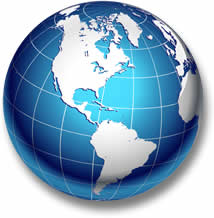
Very little was found at the time of its discovery in 1902 and 60 years later in the same spot, prospectors were unable to find any more samples of Grandidierite. Since then small finds have been uncovered in the USA, New Zealand, Antarctica, Sri Lanka, India and a few locations spread across Europe but nothing of any real interest to gemstone cutters until 2014 when another deposit was unearthed in Madagascar which has produced a few worthy gemstones.
Basically at the time of writing the only gemstone quality Grandidierite is mined in Madagascar although some have been found recently in Sri Lanka which are transparent but so far only very small carat sizes have been produced.
Grandidierite are another in a long line of gemstones that are formed and found in pegmatite rocks. Pegmatite rock formations are the result of molten rock or magma coming up from below the earth's crust to the surface.
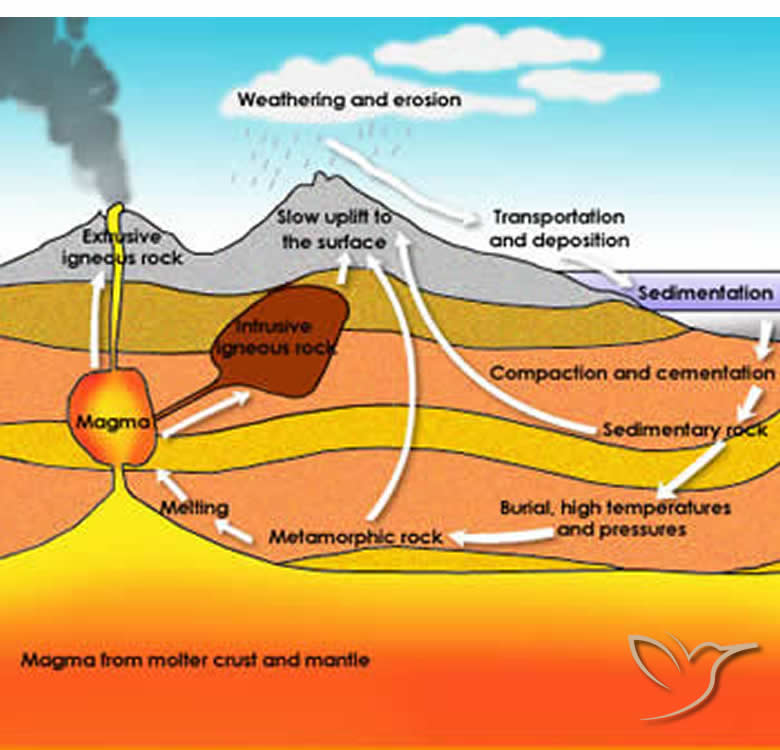
This magma cools and as it does, gas bubbles form, as do cracks and fissures where magma overlaps or cools at different times. The gases in the bubbles escape and leave gaps where liquids can seep into, as well as into the other cracks found in pegmatite rock.
Over millions of years the liquids dry leaving silicon crystals which then grow to fill these gaps. The original liquid would have had some mineral impurities which help create the various gemstones we all know and love. In the case of Grandidierite, the basic silica material has mixed with aluminum, magnesium and boron to create the crystals plus iron which has given the gemstone its blue-green color.
As far as we are aware there is no known treatment for Grandidierite other than the cutting and polishing of the rough gemstones.
- This gemstone is so rare that fascinating facts are hard to come by for this article. I have found a few.
- Guinness World Records lists the largest known Grandidierite in the world as the 78 carat specimen owned by Joseph Fam from Singapore in South East Asia.
- A lot of hard work
- If it was not rare enough already, getting Grandidierite of the ground is back breaking too. Up in the hills of southern Madadgascar, miles from any village and accessible only by 4 wheel truck along dangerous dusty trails, miners dig trenches deep into the hard barren earth using nothing more than spades and picks. Then they carefully extract the rough gemstones and since it is so far from civilization they sort out the good stuff by the side of the mine in the glaring heat so they do not have to transport anything more than necessary. On top of that when they do return to town they have to run a gauntlet of local bandits wanting to steal their hard earned produce.
- Grandidierite has been rated as the third most expensive gemstone in the world.
- They used to be neighbours
- Sri Lanka and Madagascar are the only two countries to produce any Grandidierite considered at all worthy of being gemstones and both countries are famous for their varied gemstones. Sapphires, rubies, garnets, tourmalines are just some of the precious gemstones found on these two islands. It is about 3000 miles from Madagascar to Sri Lanka across the Indian Ocean but did you know that millions of years ago these two islands were part of the same continent? In fact scientists believe that the two sites where Grandidierite gemstones have been found were once just 60km apart.
Grandidierite is rated at 7.5 on the Mohs Hardness scale so it durable enough for everyday jewelry although it would be best to avoid wearing rings or bracelets while doing anything physical.
Read our detailed article on the Mohs hardness scale here
It would be a good idea to store in cloth bags to avoid being scratched by other gemstones or material - and since it is so valuable safely out of sight. Just clean with warm soapy water and gently wipe dry.

Grandidierite is a rare and usually very expensive gemstone so a certified gemstone from a reputable dealer is the best approach but this is not always possible when you are searching the internet for a great gemstone or a bargain!
Scientists have created Grandidierite in the laboratory but only for experimental purposes and as far as we know there are no synthesized gemstones on the market.
It is possible to mistake Grandidierite for other gemstones, certain Tourmalines can be similar in color but are valuable in their own right in this blue form. Apophyllite and Apatite can look quite like Grandidierite when in its rough form but both are much softer gemstones.
A scratch test is not really recommended as using something harder than 7.5 on the Mohs scale to scratch a sample would only end up possibly damaging a valuable gemstone and using a potential Grandidierite to mark glass or a weaker material is risky too.
Be aware that clean, or cleanish, Grandidierite is rare and very valuable but opaque Grandidierite is more of interest as a collector's item and you should not spend too much on one.
At GemSelect, we currently offer brief identification reports from your choice of two well-respected independent gemological laboratories, The Asian Institute of Gemological Sciences (AIGS) and Burapha Gemological Laboratory (BGL Lab).

Some gemstones show a distinct or dramatic change in color under different light sources. Look at certain garnets under electric or artificial light and it could look red, take it outside into the sunlight and all of a sudden it is green! This does NOT occur in Grandidierite gemstones.
However as you turn a Grandidierite gemstone in your hand it can flash from yellow to green to blue and even colorless in some examples no matter the light source. This unusual phenomenon is called pleochroism and only occurs in a small number of gemstones.
To see our stock of color-change gemstones, please click here
There are a couple of things we would consider special about Grandidierite gemstones. Obviously being at least number three in the list of the rarest gemstones on the planet is pretty special. If you are interested Poudretteite, Benitoite, Red Beryl, Taafeite and Painite are other claimants to the rarest gemstone throne.
Secondly is the turquoise or 'sea foam' color of this gemstone - not only is it very rare but very beautiful too. The translucent specimens are quite stunning but if you are lucky enough to come across a crystal clear, well cut Grandidierite gemstone you will know you are in the presence of something very exceptional indeed. The first thing I thought of when saw a nearly three carat circular cut Grandidierite with flawless clarity was the cool blue eyes of a wolf.
|
Chemical Formula: |
(Mg,Fe2+)Al3[O|BO4|SiO4] - Magnesium aluminum borosilicate |
|
Crystal Structure: |
Orthorhombic |
|
Color: |
Green-Blue, Blue-Green, Blue |
|
Hardness: |
7 to 7.5 on the Mohs scale |
|
Refractive Index: |
1.590 to 1.623 |
|
Density: |
2.85 to 3.01 |
|
Cleavage: |
Good to Perfect |
|
Transparency: |
Transparent to Opaque |
|
Double Refraction or Birefringence: |
0.033 |
|
Luster: |
Vitreous |
|
Fluorescence: |
None |
- العربية | معلومات Grandidierite - أحجار كريمة حجر Gemstonstone زرقاء نادرة ب...
- 中文 | Grandidierite 信息 - 极其稀有的海泡蓝色宝石
- Français | Grandidiérite Info - Pierre précieuse bleu écume de mer incroyable...
- Deutsch | Grandidierite Info - Fantastisch seltener blauer Seeschaum-Edelstein
- Italiano | Informazioni sulla grandidierite - Pietra preziosa blu schiuma di ...
- 日本語 | グランディエライト情報-素晴らしく珍しいシーフォームブルーのジェムストーンストーン
- 한국인 | Grandidierite 정보 - 환상적으로 희귀한 바다 거품 파란색 원석
- Português | Grandidierite Info - Fantasticamente rara pedra preciosa azul espu...
- Pусский | Информация о грандидиерите - Фантастически редкий драгоценный каме...
- Español | Información de grandidierita: gema azul de espuma de mar fantástic...






